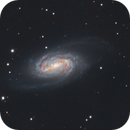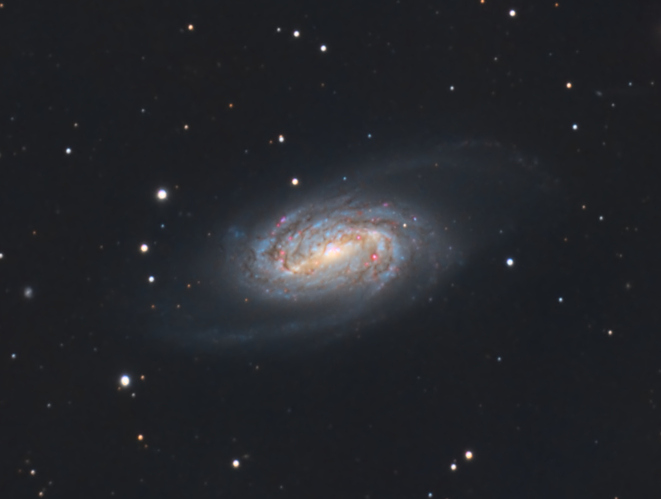This shot is compiled from images taken over several months, finishing up this April.
NGC 2903 is a quite nice barred spiral galaxy in Leo (the constellation  ), 30M LY away and not a member of any cluster. It’s quite bright, enabling a decent capture here at Blueberry Hill observatory in 19.5 SQM skies.
), 30M LY away and not a member of any cluster. It’s quite bright, enabling a decent capture here at Blueberry Hill observatory in 19.5 SQM skies.
Gear used:
ASI1600MM Cool mono with Astrodon Gen 2 LRGB plus Ha filters
EdgeHD 9.25" SCT
Paramount MyT
Calibrated with AstroPixelProcessor, processed with PixInsight and Photoshop, and of course acquired with Voyager while I slept 
On Astrobin:

Cheers,
Rowland
6 Likes
Nice job, Rowland. The HII regions really pop and the color balance is very nice. I prefer the natural look that you have delivered here.
How do you like APP for preprocessing?
Best,
Glenn
Hi Glenn,
Thanks! I tell you, it’s very interesting to me that most of the IOTD picks on Astrobin - and quite a few NASA APOD’s - use an extremely high amount of color saturation boost. Look at Adam Block’s image of this one on WikiPedia - wow! I get it, color is exciting and brightly colored pictures are pretty. But maybe you need really high quality data before you can get away with that…?
I’m a fan of APP. Mabula Haverkamp has kept pouring his soul into improving his preprocessing routines and I think he’s either in the lead already or will be there soon. I have done some A:B comparisons with PI and the APP result has been as good or better. Not scientific, but I’m not doing science, I’m figuring out what works for me  .
.
APP’s strengths for me:
- Much less loading and reloading files - load everything once and that’s it.
- “Quality” score is a natural fallout of his preprocessing workflow, so you can just say “use quality” (or SNR, noise, etc.) as an integration weight factor without a separate step like SubframeSelector in PI.
- Light Pollution Removal is much easier than DBE and results I’m getting are as good or better.
Weaknesses:
- No fast Blink like PI’s, so I load in PI, blink, then calibrate in APP. Save calibrated frames and load them all later when I have my multi-night’s data ready to align and integrate.
- Postprocessing is limited beyond RGB combine, background neutralization, crop, light pollution removal. No noise reduction, decon, etc. You can get a complete image but Mabula has openly acknowledged that sophisticated post processing is TBD.
I like the fact that PI has a serious competitor brewing - keeps everyone getting better!
Cheers,
Rowland
Wonderful Rowland, congrats. Great color.
All the best
LO
Rowland,
I agree that the images winning APODs and IOTDs tend to have very high contrast and color saturation. I can appreciate that, but I prefer more realistic colors. My gold standard is, “What would this thing look like if I were flying by it in a spaceship?” 

I use PixInsight for all preprocessing and processing. I like the results I am able to get but the program feels like an EXTREMELY manual tool. I see an opportunity to make astro-specific processing programs a little more intelligent and automated without compromising user control over the things that matter.
I’ll have to look into APP one of these days. Thanks for giving your impression of it.
Nice image!
Glenn
 ), 30M LY away and not a member of any cluster. It’s quite bright, enabling a decent capture here at Blueberry Hill observatory in 19.5 SQM skies.
), 30M LY away and not a member of any cluster. It’s quite bright, enabling a decent capture here at Blueberry Hill observatory in 19.5 SQM skies.



